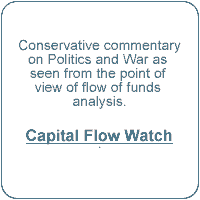 Bubble of 1971: Aftermath and the Rio Stock Exchange
Bubble of 1971: Aftermath and the Rio Stock Exchange
Case Study
The Aftermath of the Stock Market Bubble of 1971
The Inevitable Long Way Down
As long as price-earnings ratios were high and the economic boom persisted, new issues continued to come to the market, driving prices ever downwards.
After all, for issuers that had paid commissions of 25% to sell their stock door-to-door a decade earlier, raising capital at four or five times earnings, new issues at seven to ten times earnings still seemed cheap.
Starting with price-earnings ratios of thirty at the peak of the bubble, there was a long way to go down before the incentive to offer new issues would abate.
As prices fell, so did mutual fund sales.
Activities of speculators dried up.
As the graph shows, the bear market lasted for over a decade.

Because inflation was extremely high over this period, the Rio (grey) and São Paulo (red) Stock Indices have been deflated by the price index. The graph also shows the São Paulo index adjusted for devaluation of the currency against the dollar (green).
The chart suggests that there were three peaks in Brazilian stock prices over the forty year period: in 1971, in 1986, and in 1999.
Although each of these booms was characterized by extraordinary price appreciation, the long-term behavior of the price index was more or less horizontal, while the trend in the dollar-adjusted index was negative.
The End of the Rio Stock Exchange
The Brazilian market in 1971 was a case in which an investor familiar with Capital Flow Analysis could have ridden the market up, while watching the securities regulator for the first sign that the queue of new issues had begun to move.
Under no illusion that prices reflected intrinsic value, a savvy investor could have switched to fixed income securities in time to lock in capital gains at the highest level in decades.
In 1971, because of monetary correction on government bonds, it was possible to earn returns of over 10% a year (in real terms) with investment grade fixed income securities.
In other words, there were attractive alternatives to equity investment and no reason to hang on to a stock portfolio.
The Brazilian Crash of 1971 could have been avoided and investors saved much pain if Finance Minister Delphin Netto had understood the consequences of allowing the securities regulator to hold issues off the market while Decree Law 157 Funds continued to stoke demand.
 A stained glass window in a museum is all that remains of the Rio Stock Exchange
A stained glass window in a museum is all that remains of the Rio Stock ExchangePrior to 1971, the Rio Exchange was the largest in Brazil and the decade of the 1960s were its golden years. Never again was the Rio Exchange to have the honor of being Brazil's premier securities market.
For the next generation, the progress of the Rio Exchange was downward. By the 21st century, the Rio bourse had disappeared, having been absorbed by the São Paulo Exchange.
Ministers of Finance, securities regulators, and exchange officials could have done their job better if they had been familiar with the principles of Capital Flow Analysis.
Why So Few Read The Signs
Even though flow of funds analysis is nothing more than common sense applied to public information, the Minister of Finance, Delfim Netto, the official that could have prevented the crash and the loss of investor wealth, did nothing to correct the imbalance created by government rules.
By comments after the crash, Delfim Netto showed that his understanding of capital markets was like that of other macro-economists.
Perhaps remembering John Maynard Keynes' analogy of musical chairs, Delfim Netto blamed investors, rather than the government's bungled handling of new issues and 157 funds.
There were many reasons why the bubble was misunderstood and the imminent crash unsuspected:
- Buying pressure from 157 funds was the result of government regulations, running on automatic pilot. From the journalistic point of view, this was not 'news' and the prime cause of the boom was ignored by the newspapers;
- The government official in charge of registering new issues had no experience in capital markets. It was not unusual for officials to delay in approving requests from the private sector. The consequences on investors from holding new issues off the market were not understood;
- The Finance Minister, Delfim Netto, lacked the understanding of or commitment to capital markets of his predecessor, Octávio Gouvêia de Bulhões.
- The Stock Exchanges continued to be managed by the same brokers that had run these institutions so poorly before the Revolution of 1964. There was no professional management. Exchange officials showed little interest in protecting the interests of investors or in maintaining a 'fair and orderly market'. Because brokers were earning commissions and because customers were happy, exchange officials saw no reason to question the status quo.
- Issuers, waiting in line for a chance to go public, were pleased to see the cost of capital fall week by week, as prices rose.
- Investors lavished praise on fund managers, interpreting their 'good performance' as a sign of competence. Most investors had been investing in equities for less than five years, and many for less than a few months.
- The market was so new that notions of value were not yet formed. In the 1950s, stocks were considered expensive when they sold for more than par value. By the early 1960s, Brazilian investors began to use book value as a guide. By 1970, the concept of price-earnings was popular, although few knew what a reasonable price-earnings ratio might be in Brazil, with real interest rates of over 8%, inflation of over 20%, and real earnings growth of over 10%.
- Reasons for forecasting the coming crash based on flow of funds analysis — the proper basis for predicting the imminent crash — had little support in economic texts or investment theory at the time.
- Finally, these were good times — the peak years of the Economic Miracle. There seemed to be strong justification to scoff at expectations of doom. Virtually no one thought that by the end of the decade the military would begin to return to the barracks, pardoning communists and corrupt politicians and inviting them to reenter the political process.
Thirty years later, the United States had its own Great Bubble, which we examine in a separate case study. Like Delfim Netto, Alan Greenspan also did not understand how to read flow of funds tables, blaming excesses on 'irrational exuberance' just as Delfim Netto had blamed the speculators.
In both of these bubbles, the underlying forces that drove prices higher were government rules and regulations that had collateral effects that the economists were not trained to see.

